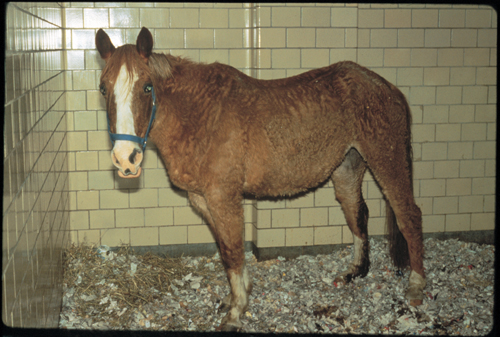Equine Internal Medicine Q&A 04
| This question was provided by Manson Publishing as part of the OVAL Project. See more Equine Internal Medicine questions |
A 23-year-old mixed breed horse is examined because of failure to shed its winter coat, chronic coughing and, more recently, partial anorexia and loss of weight. A serum chemistry had the following abnormalities: hyperglycaemia (9.2mmol/l; 166mg/dl) and increased liver enzyme activity (AST, 560u/l; GGT, 167u/l). Clinical examination reveals widespread wheezes during thoracic auscultation. The temperature and heart rate are normal but the respiratory rate is elevated (20bpm) and there appears to be an increase in expiratory effort.
| Question | Answer | Article | |
| What diseases are most probable from the clinical examination of this patient? |
|
Link to Article | |
| What further diagnostic tests should be performed to help confirm your diagnosis? | The age of the horse, clinical signs and hyperglycaemia in combination are virtually diagnostic of pituitary adenoma. Further confirmatory tests might include:
There are many other tests that could be performed but none appear to be as sensitive and specific as the TRF response or ACTH measurement or as easy as the plasma insulin (a single sample is all that is required). |
Link to Article | |
| How might the elevation in liver enzymes be related to one of the physically apparent disorders? |
In this case the microscopic diagnosis was hepatic lipidosis. This is likely to be related to the pituitary adenoma and the resulting increase in lipolysis. |
Link to Article | |
